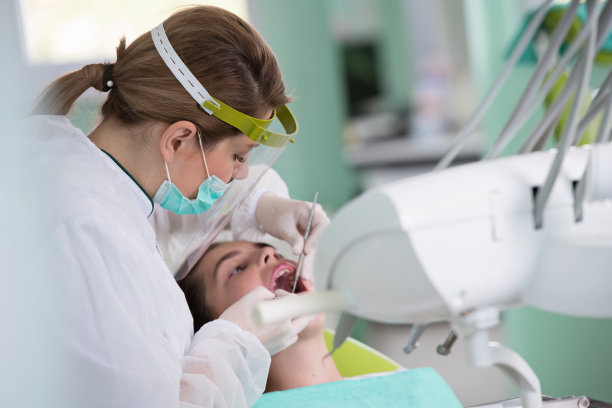The Complete Guide to Extracting a Tooth Safely and Effectively in Dental Clinics
Summary: Extracting a tooth safely and effectively in dental clinics involves a comprehensive understanding of the procedure, patient preparation, post-operative care, and potential complications. This guide details each aspect, emphasizing best practices and protocols utilized by dental professionals. By following precise steps, dentists can minimize patient discomfort and ensure optimal healing. Additionally, this article sheds light on the importance of thorough assessments and clear communication between dentists and patients to enhance the overall experience. The aim is to provide a rounded perspective that enriches both the dental practice and patient understanding.
1. Understanding Dental Extraction Procedures

Tooth extraction is a common procedure performed in dental clinics, often necessary due to decay, disease, or dental overcrowding. Understanding the process begins with an examination to determine if extraction is the best option for the patient. Dentists assess the tooths condition, tooth alignment, and the patients dental history to make informed decisions.
Once the decision for extraction is confirmed, the dentist will explain the procedure to the patient, ensuring understanding and comfort. This communication is vital in alleviating anxieties regarding the extraction process. Patients benefit from knowing what to expect, which fosters trust in their dental care provider.
It’s essential for the dentist to prepare for the extraction by gathering all required tools, including forceps, elevators, and suturing materials. A well-prepared clinical environment significantly contributes to a smooth procedure and better patient outcomes.
2. Patient Preparation and Anesthesia Considerations
Before beginning the extraction, patient preparation plays a crucial role. This includes taking a comprehensive medical history and potentially performing diagnostic imaging like X-rays. Understanding the patients overall health is key to tailoring the procedure and anesthesia used in the process.
Anesthesia options vary based on the complexity of the extraction. Local anesthesia is typically employed for simple extractions, allowing the patient to remain awake while pain is effectively managed. For more complex cases, sedation or general anesthesia may be considered, ensuring the patients comfort throughout the procedure.
Furthermore, educating the patient on pre-operative instructions is essential. This could involve dietary restrictions, medication adjustments, and instructions on what to expect on the day of the procedure. Proper preparation helps in reducing anxiety and enhances the overall effectiveness of the extraction.
3. Post-Operative Care and Patient Guidelines
After a dental extraction, proper post-operative care is crucial for ensuring a smooth recovery. Patients should receive clear instructions regarding oral hygiene, pain management, and dietary recommendations. These guidelines help prevent complications such as infection or dry socket.
Patients are typically advised to rest after the procedure while avoiding strenuous activities for at least 24 hours. Ice packs can be applied to the area to minimize swelling and discomfort. Dentists often recommend over-the-counter pain relievers or prescribe medication to manage pain effectively.
Follow-up care is also vital. Scheduling a follow-up appointment allows for monitoring the healing process and provides an opportunity to address any complications. Encouraging patients to contact their dental clinic if unusual symptoms arise fosters trust and ensures better recovery outcomes.
4. Identifying Complications and Solutions
Despite the best efforts to ensure a successful extraction, complications can occur. Knowing how to recognize these potential issues is essential for both the dentist and patient. Common complications include infections, excessive bleeding, or adverse reactions to anesthesia.
Infection prevention starts during the extraction process, with strict adherence to aseptic techniques. Post-operative instructions emphasizing the importance of oral hygiene can further reduce infection risks.
If complications arise, quick identification and intervention are critical. Dentists should be prepared with solutions for managing complications, including prescribing antibiotics for infections or providing additional treatment for excessive bleeding. An open line of communication helps patients feel supported and reassures them that care continues well beyond the extraction.
Summary:
Successfully extracting a tooth in a dental clinic hinges on understanding the procedure, ensuring thorough patient preparation, delivering effective post-operative care, and anticipating potential complications. Each of these aspects is interconnected, significantly affecting patient outcomes and satisfaction. By emphasizing communication and care standards, dental professionals can create a positive experience for their patients that reinforces trust in their practice.
This article is compiled by Vickong Dental and the content is for reference only.


